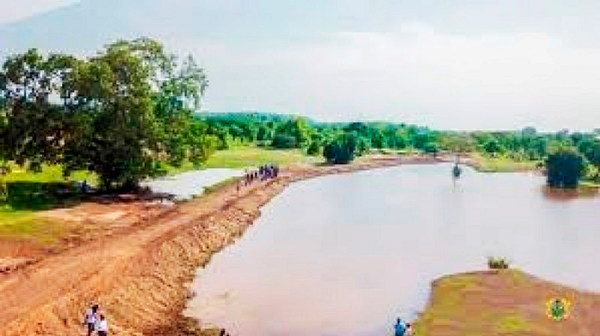Each year, thousands in northern Ghana brace for the same catastrophe. The opening of the Bagre Dam in Burkina Faso. And with it comes devastation — flooded homes, destroyed farms, lost lives. In 2023 alone, over 8,000 residents were displaced and damages surpassed GH¢45 million, according to NADMO.
And yet, for decades, a solution has sat on paper — the Pwalugu Multi-Purpose Dam. Envisioned in the 1970s under General Acheampong, re-announced in 2019 with renewed fanfare, and still, five years later, not a single foundation stone has been laid.
Full of promise, the Pwalugu Dam is more than just a buffer against floods. It’s a multi-purpose project poised to generate 60 megawatts of hydroelectric power, add 50MW of solar energy, irrigate 25,000 hectares of farmland, and create 20,000 jobs, both directly and indirectly. With an estimated cost of US$993 million, it was declared by the NPP government as “the single largest investment in northern Ghana’s history.” But today, the site remains bare.
Leading the call for action is Professor David Millar, President of the Millar Institute for Transdisciplinary and Development Studies. A long-time champion of sustainable development in the north, Prof. Millar does not mince words: “This dam is more than a reservoir — it is a lifeline,” he said. “It promises not only water security and energy but dignity and development for a region that has waited far too long.” He adds that the delays point to a deeper imbalance in Ghana’s development agenda. “The problem is known. The solution is clear. The missing link is political will,” Millar stated. “This project must be reclaimed from partisan politics and treated as a national priority.” He also advocates for an inclusive development model — one that respects and involves local knowledge systems and indigenous leadership.
Echoing his call is Dr. Abiba Nsoh, a development consultant and a driving force behind the Northern Development Advocacy Forum. For her, the Pwalugu Dam has moved beyond political promises — it is now a people’s campaign. “We’ve stopped waiting and started organizing,” she said. “This is our baby now. If it takes advocacy, research, and local mobilization to get it done, then we are ready.” Dr. Nsoh highlights the project’s potential for transforming the economy of the Upper East Region — not just through flood prevention, but through agriculture, aquaculture, and energy. “The north deserves to be known for productivity, not poverty,” she said. “This dam can change that narrative.”
So why hasn’t construction started? Government officials cite delays in environmental assessments, funding constraints, and global economic pressures. But advocates fear that without sustained public pressure, the project could remain a forgotten footnote. “We cannot afford another cycle of flooding and excuses,” says Prof. Millar. “This is about regional equity. It’s about giving the north what is its due — not as charity, but as justice.” Dr. Nsoh agrees: “We don’t want sympathy; we want action. Let’s move beyond the press releases and make it happen.”
The Pwalugu Multi-Purpose Dam: Facts at a Glance
Location: Pwalugu, Talensi District, Upper East Region Estimated Cost: US$993 million Power Generation: 60MW hydro + 50MW solar Irrigation Coverage: 25,000 hectares Flood Control: Major buffer against Bagre Dam overflow Job Potential: Over 20,000 direct and indirect jobs Main Benefits: Electricity, agriculture, fish farming, regional development
As the rainy season looms, residents once again brace for the unknown. But voices like Millar and Nsoh remind the nation: the north does not have to suffer — it only needs to be heard.
Fuseini Abdulai Braimah
0550558008 / 0208282575
[email protected]


